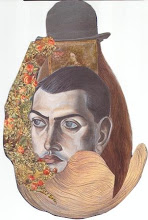Thursday, November 19, 2015
Novel Review- Doctor Who City of Death
It would be easy to look at the recent Doctor Who novelization City of Death and ask, “What’s the point?” The original televised version from 1979 is one of the most well realized and highly regarded of the original twenty-five year run of the show. And it is unanimously hailed as the best of Douglas Adams’s (of Hitchhiker’s Guide to the Galaxy fame) run as script editor for the program. It features great end-of-episode reversals, a good monster, a superbly villainous antagonist, and a great conjunction of Adams’s humor and Tom Baker’s performance as the Doctor. It also has all the old school hallmarks like clunky Sci-fi set dressing, straight faced solemn voiced delivery of lines like, “Scaroth last of the Jagaroth,” and wobbly walls, all leading up to a legendary John Cleese cameo. So who exactly asked for a novelization?
The impetus likely came from the success of the 2014 book adaptation of the Douglas Adams penned episode Shada, which was only partially filmed before being interrupted by a BBC strike and then never finished. The book proved the potential of combining the Douglas Adams and Doctor Who brands. It’s a very effective strategy, a fact of which I am proof. Even though it long ago became a tired ploy to associate the deceased Adams’s name with a property so you can pawn off a mediocre book, and even though it is a notoriously painful experience to read someone who is not Douglas Adams try to write like him, still I picked up the book after only one or two eye-rolls.
The book argues for the legitimacy of its existence first by the mere fact that we can never have too many fun science fiction adventures to read. Second, this book has the benefit of the robust story from City of Death to build from. There is plenty left to envision and speculate upon that there is naturally not room for in a TV show. Particularly well realized is the inner life of the Doctor’s companion Romana, whose spunky, sarcastic, and energetic presence is expounded upon into the perfect self-confident yet youthfully insecure foil for the Fourth Doctor by writer James Goss.
It is also fun to have a long time in which to observe and envision the villainous Count Scarlioni and his wife. There are parts that are expounded upon beyond requirements though. The persons of the pretentious art patrons from the end of the fourth episode, which provided the fantastic visual of John Cleese in an episode of Who and also worked as a biting and memorable throwaway joke, get a superfluous and distracting back story that intrudes on the action of the novel and adds nothing important or enlightening to their presence in the story. It might seem like an ok idea for a fun in-joke for people familiar with the episodes but it slows down the book and dilutes the original joke.
The book is a fun read for just about any Doctor Who fan. People who know the episodes will get the pleasure of lingering over one of the show’s genuine classics, and people who haven’t seen it will get to discover one of Who’s best story lines: high stakes, fun characters, multiple levels of mystery and wry humor. The ideal reader is someone who likes the Doctor Who brand generally but is trepidatious about the old episodes because of their notoriously poor ‘worth it/not worth it’ ratio. This one is worth it, read the book first, that way you can do your own editing and special effects.
Subscribe to:
Post Comments (Atom)


No comments:
Post a Comment